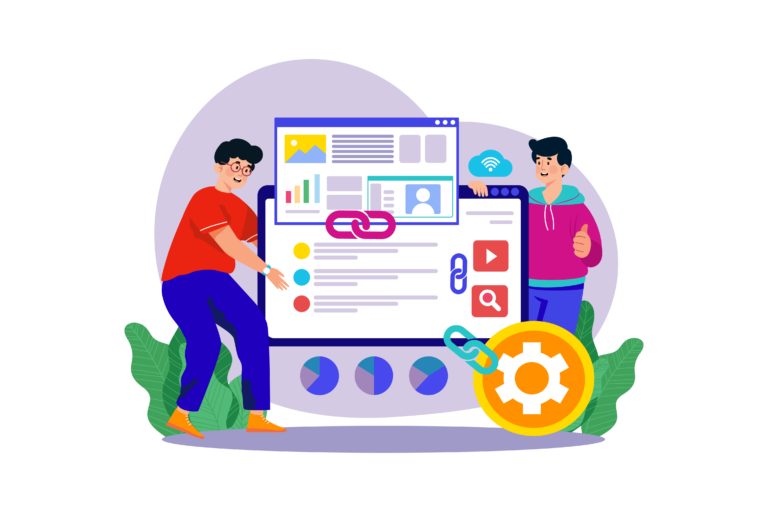Supporting Employee Autonomy with Task and Workflow Management
Autonomy is one of the most powerful motivators in the workplace. Employees who feel trusted to make decisions and manage their responsibilities are more engaged, more innovative, and more productive. But autonomy doesn’t mean abandoning structure—it requires systems that provide clarity, visibility, and support without micromanagement.
When processes are manual or fragmented, employees spend more time navigating tools and chasing information than focusing on meaningful work. By combining visibility with flexibility, project management tools allow individuals to manage their own work while staying in sync with broader team priorities.
Lark Tasks: giving employees clarity without micromanagement
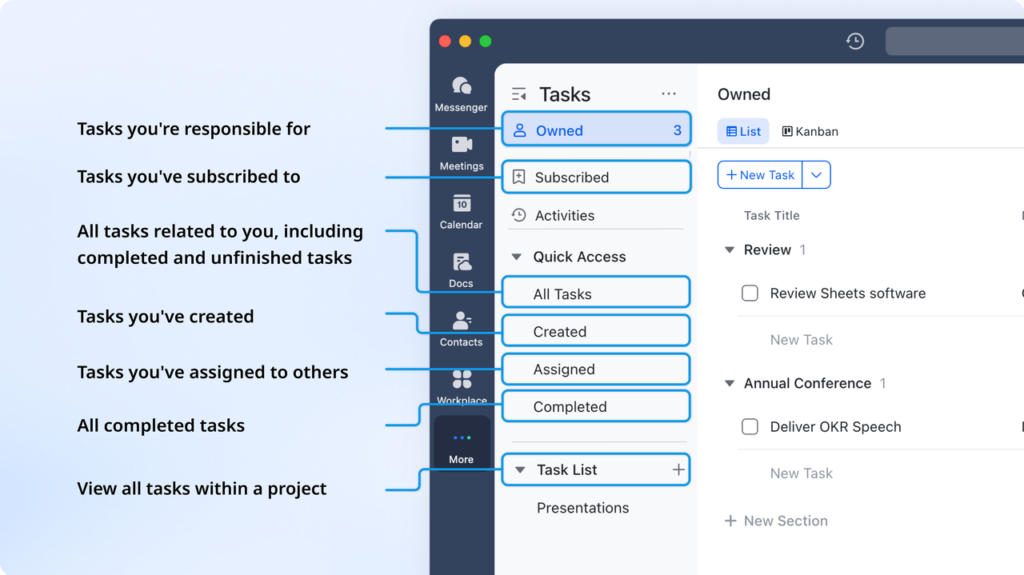
Autonomy happens when employees are clear about their responsibilities and timelines. Lark Tasks provides clarity for individuals by clarifying responsibilities, making them visible, and tracking them easily.
Employees can manage their own task boards, arranging their work on whatever basis they choose, be that sprints, pipelines, or personal lists, without constant direction from their direct manager. Dependencies will illustrate how their progress connects with other employees; the presence of notifications keeps deadlines front of mind but manages noise. This enables managers to avoid micromanaging by providing full transparency into progress. Employees can freely decide how to complete work, within a system of accountability.
Lark OKR: aligning autonomy with organizational goals
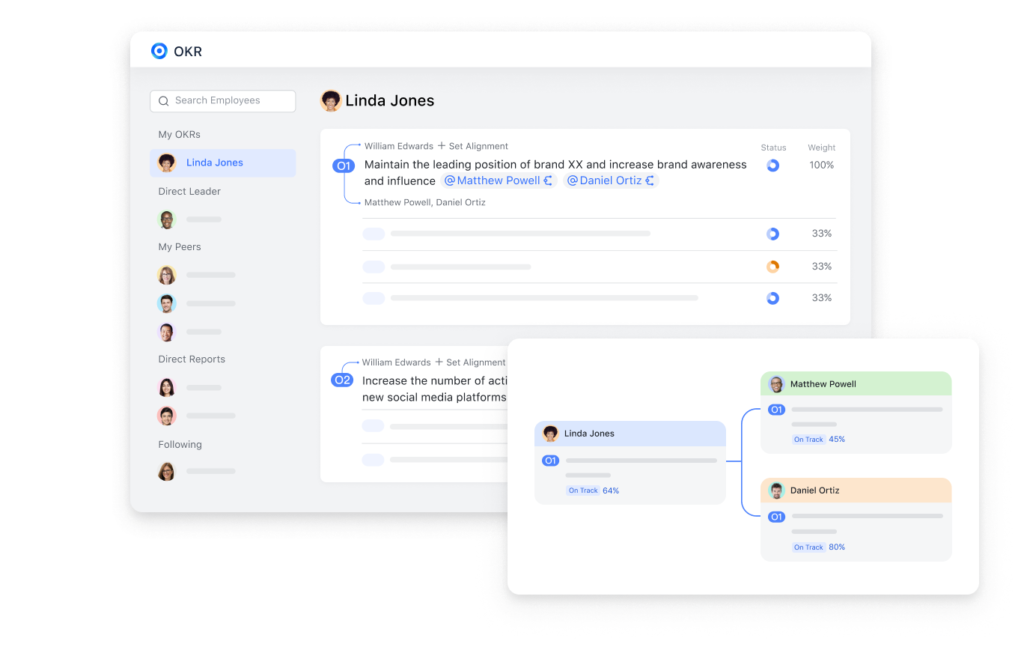
Autonomy works best when it is connected to strategy. Without alignment, employees may be productive but not impactful. Lark OKR (Objectives and Key Results) ensures autonomy leads to outcomes by connecting daily tasks with measurable company objectives. Employees can see how their responsibilities contribute to larger goals, giving context and purpose to their independent decisions.
Because OKRs are updated in real time, progress is transparent across the organization, creating trust that autonomy doesn’t mean misalignment. Managers can focus on guiding outcomes rather than overseeing every step, while employees gain the confidence to make decisions knowing they’re tied to broader priorities. This balance of freedom and direction makes autonomy sustainable.
Lark Calendar: autonomy through time ownership
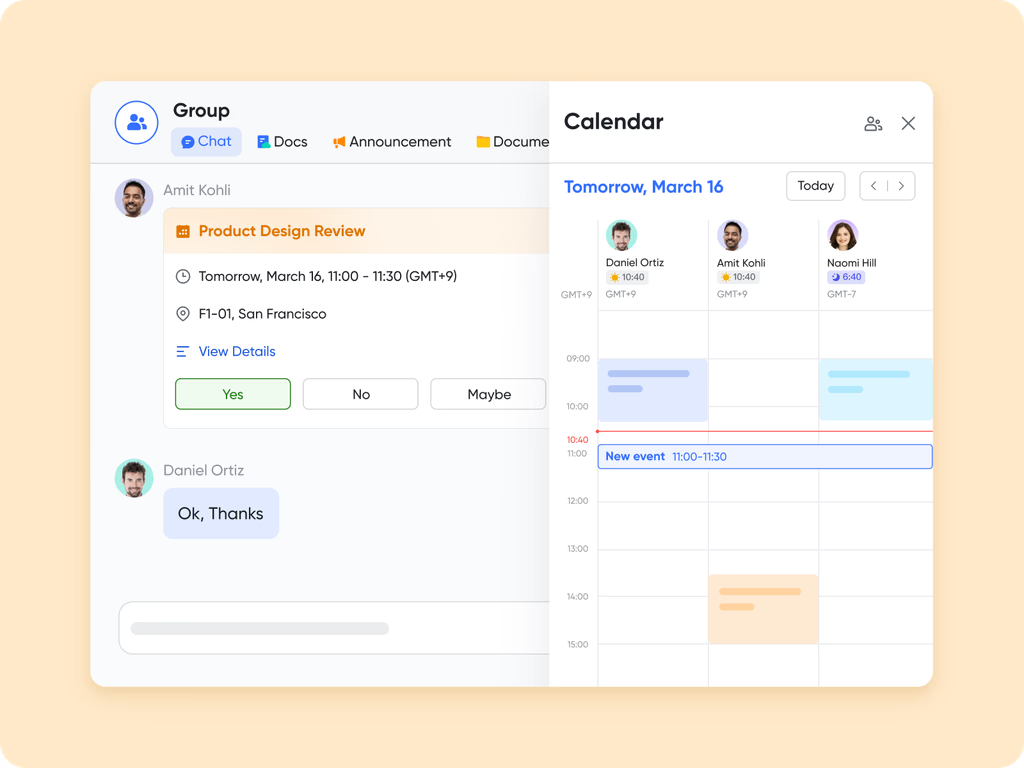
Time management is commonly one of the biggest roadblocks for workers working on their own—employees value autonomy, and Lark Calendar helps promote autonomy with tools that are easily visible and flexible to schedule. Shared calendars allow employees to see what team commitments are on the calendar and employee availability, where employees can book time without having to send back-and-forth emails to find an available time to meet.
Smart reminders allow employees to look at linked documents or agendas before meetings to prepare for discussions and lessen last-minute panic rushes. Distributed teams are mindful of different time zones, which provides fairness and discourages misunderstandings.
The power of visibility in schedules creates awareness of schedules that are connected to work.; employees have more awareness of how their time is spent in their work day; employees can plan their work day while being mindful of things they have committed to based on team availability.
Lark Docs: documenting autonomy in action
Effective independent decision-making requires transparency of process and information access. Lark Docs turns reliance on static documents into a living, breathing guiding experience that promotes autonomy by giving employees access to that collective knowledge, immediately. Rather than enduring waiting periods for approvals, or to clarify, they can co-edit documents and leave inline comments, while having the option to browse version histories to investigate how processes may have evolved.
Embedded Sheets means that when data is active within documents, it is always updated, ensuring employees have the confidence to act on live versus static processes without worrying about whether the information and knowledge they are working off is stale. Because Docs are linked to tasks and workflows, my experience has been documentation does not languish in the background but plays an active role in execution. This enables employees to exercise initiative and empowers consistency in the way processes are executed.
Lark Base: structuring autonomy with accountability

Freedom without accountability can quickly lead to chaos. Lark Base helps employees work independently while keeping responsibilities transparent and aligned. Through customizable databases, teams can track tasks and deliverables in ways that suit their workflows while still contributing to a central system. Dashboards give managers clear visibility into progress without disrupting daily execution, and automations update records in real time to reduce manual oversight and build trust. By connecting customer deliverables with internal workflows, Base supports CRM app processes that tie employee autonomy to both internal productivity and external commitments to clients and partners.
Lark Messenger: autonomy supported by direct communication
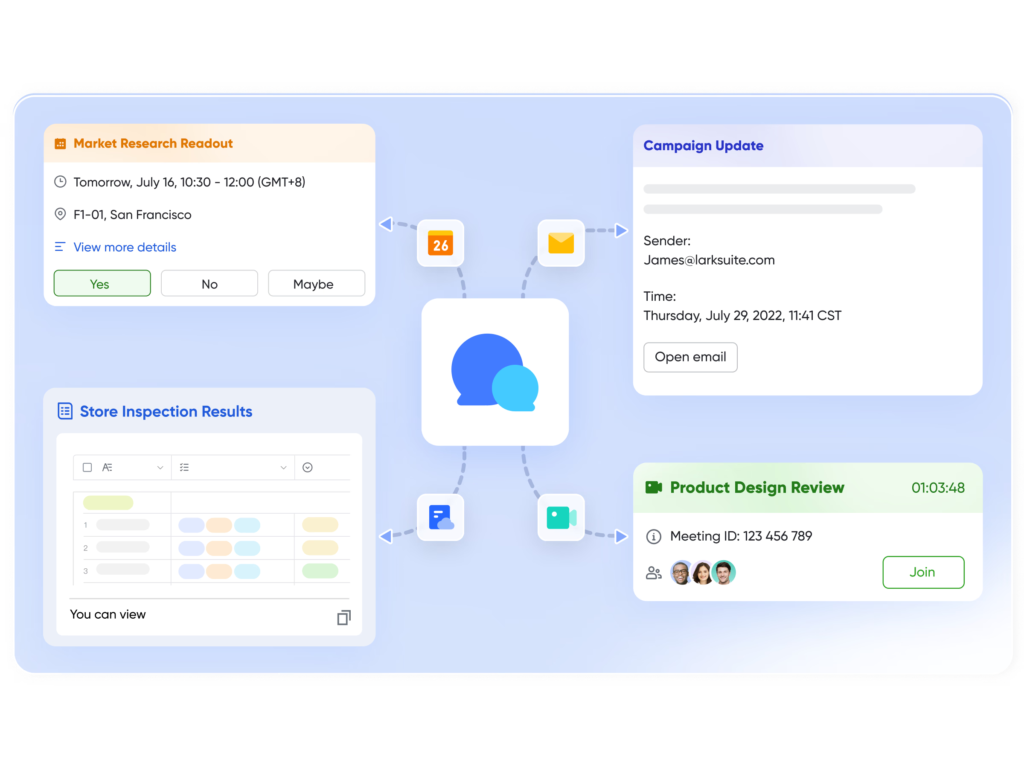
Autonomy doesn’t mean isolation—employees still need fast, clear channels of communication that support decision-making. Lark Messenger ensures conversations stay organized and connected to work execution. Threaded discussions allow employees to focus on specific topics without being distracted by irrelevant chatter, while pinned messages surface key updates that matter most. Buzz notifications make sure urgent issues reach the right people without creating constant noise.
Most importantly, Messenger links directly to Docs, Base, and Tasks, allowing employees to act immediately on discussions. By embedding communication within an automated workflow, Messenger ensures that conversations naturally transform into action, reducing the need for repeated oversight.
Conclusion
Supporting autonomy does not mean throwing caution to the wind and allowing employees to do anything they want without direction. It means that organizations provide the necessary systems for independence as needed to support their organizational goals. Lark is able to find the sweet spot of supporting autonomy by having features that can provide clarity, visibility, and structure without micromanaging.
Tasks define clear responsibilities, OKR connects individual efforts to strategy, Calendar gives owners of time, Docs indicates that processes are documented and available, Base adds structure and accountability, Messenger creates a workflow in communications, and Minutes ensure that meetings turn into action.


